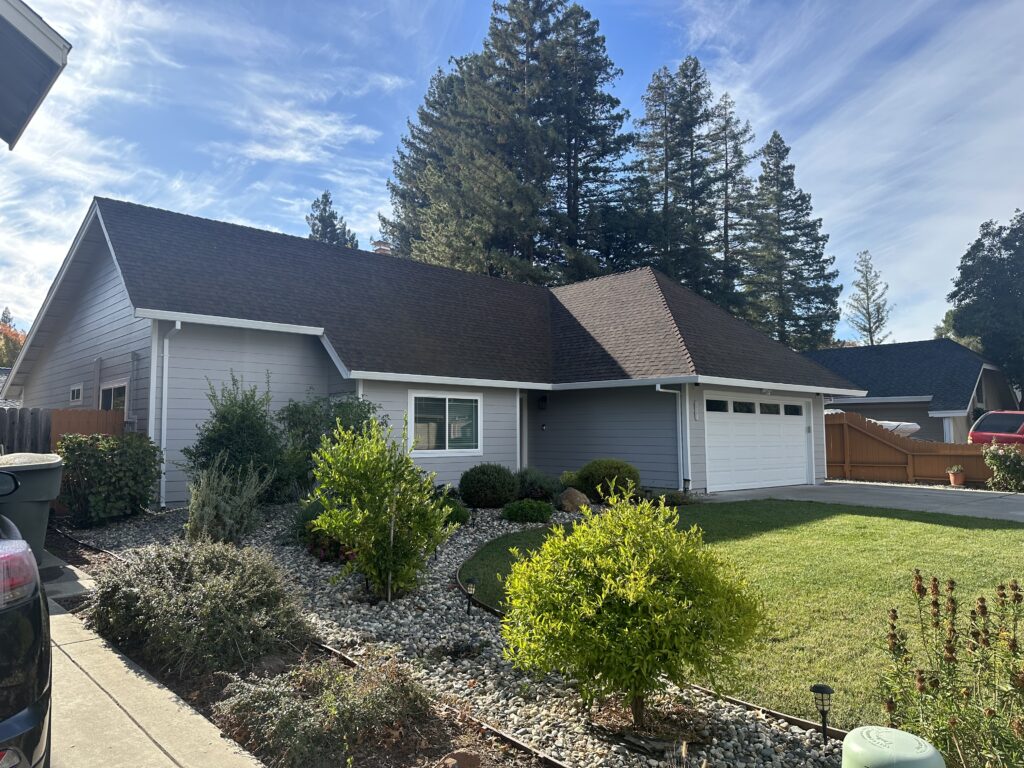When homeowners think about upgrading their siding, energy efficiency isn’t always the first factor that comes to mind. However, the right siding material can play a crucial role in lowering energy bills and maintaining a more comfortable home year-round. James Hardie siding, known for its durability and high performance, also stands out for its energy efficiency benefits. Designed to meet the needs of various climates, this fiber cement siding has features that directly impact energy usage in your home.
Here’s a closer look at how James Hardie siding contributes to energy efficiency and helps homeowners save on costs.
Thermal Resistance for Better Temperature Regulation
James Hardie siding is engineered to reduce heat transfer, helping your home maintain a consistent indoor temperature regardless of the weather. Fiber cement, the hallmark material of James Hardie siding, has a natural thermal resistance that sets it apart from alternatives like vinyl or wood.
How It Works:
- Minimized Heat Gain in Summer:
James Hardie siding can help your home stay cooler during hot months by preventing outdoor heat from penetrating through the walls.
- Retains Heat in Winter:
During colder months, the siding reduces heat loss, keeping the interior warmer without overworking your heating system.
With better insulation around your home’s exterior, HVAC systems don’t have to work as hard, leading to noticeable energy savings.
Pro Tip:
Pair thermal-resistant siding with energy-efficient windows to create a comprehensive barrier against outdoor temperature fluctuations.
Moisture Control Improves Insulation Efficiency
Moisture can be a silent culprit when it comes to energy loss. When water infiltrates walls, it can wreak havoc on insulation, rendering it less effective over time. With James Hardie siding, you get a material that resists water damage and protects your home’s vital components.
Key Features for Moisture Control:
- Water Resistance:
James Hardie fiber cement siding doesn’t absorb water, unlike wood siding, which can swell and deteriorate.
- Integrated Weather Barriers:
When installed with a quality house wrap, the siding prevents moisture infiltration while allowing vapor to escape.
By maintaining dry and functional insulation, James Hardie siding helps your home optimize energy usage efficiently.
Did You Know? Properly sealed siding can also prevent mold or mildew growth, which are common causes of poor indoor air quality and wasted energy.
Enhanced Energy Efficiency with Insulation
While James Hardie siding excels on its own, pairing it with proper insulation takes energy savings to the next level. The siding provides a robust first line of defense, and additional insulation adds another layer of thermal resistance.
Benefits of Combining Siding and Insulation:
- Reduced Drafts:
Insulation fills in gaps that might exist behind the siding, blocking cold or hot air from seeping in.
- Localized Climate Adaptation:
Homes in colder climates can benefit from rigid foam insulation, while homes in hotter areas may prefer reflective barriers to deflect heat.
This combination is particularly effective when paired with James Hardie’s HardieZone® System, which offers climate-specific siding options to match the unique demands of each region.
Pro Installation Tip:
Speak with your contractor about insulation upgrades during siding installation to maximize energy efficiency.
Long-Term Savings on Heating and Cooling Costs
One of the biggest advantages of choosing energy-efficient siding is its long-term impact on utility bills. By maintaining a regulated indoor temperature, James Hardie siding helps reduce the strain on heating and cooling systems, leading to lower energy consumption.
Examples of Savings:
- Winter Energy Savings:
Homes outfitted with James Hardie siding often notice a reduction in heating costs as warm air stays locked inside.
- Cooler Summers:
By minimizing heat gain during warmer months, homeowners can rely less on air conditioning.
Over time, these energy savings add up significantly, making James Hardie siding a worthwhile investment for budget-conscious homeowners.
Positive Environmental Impact of Energy Efficiency
By decreasing your home’s energy consumption, you’re not only saving money—you’re also contributing to a more sustainable future. Energy-efficient homes reduce their reliance on nonrenewable energy sources, leading to a smaller carbon footprint.
Sustainability Benefits:
- Lower Greenhouse Gas Emissions:
A well-sealed, energy-efficient home means less energy is required for heating and cooling, reducing your household’s environmental impact.
- Responsibly Manufactured Materials:
James Hardie siding is produced with sustainability in mind. The materials used are long-lasting and contribute less waste compared to cheaper siding options that require frequent replacement.
For eco-conscious homeowners, combining energy efficiency with durable, low-maintenance siding is a win-win for both your wallet and the planet.
Conclusion
James Hardie siding brings more than just visual appeal to your home—it’s a smart choice for energy efficiency that delivers long-term savings and environmental benefits. By reducing heat transfer, safeguarding against moisture, and enhancing insulation, this siding helps lower heating and cooling costs while keeping your home comfortable in every season.
If you’re ready to take the next step toward improving your home’s energy efficiency, contact Hexteriors today. Our team of experts is here to guide you through the process, ensuring you get the best results with expertly installed James Hardie siding. Get in touch for a consultation and discover how we can help you save on energy costs while enhancing your home’s exterior.




